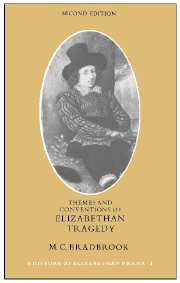10 - CHARACTER, IDENTITY AND THE PERFORMER'S ART IN ELIZABETHAN DRAMA
Published online by Cambridge University Press: 08 January 2010
Summary
Modern theatre accepts a strong convention of one man, one rôle, that, through the actor's projection, prompts both actor and audience to identify with the part; the convention derives from the Elizabethan tragic hero as a complex, yet ultimately unfathomable being.
In craft plays of the fourteenth century, the Mercers' Jesus, the Grocers' Jesus and the Butchers' Jesus would be represented by different men. They might be competitive.
In the next century, morality plays raised different problems, for another sense of identity showed many aspects of one man. Pictorial designs of the soul emerging from the body at death as a small naked figure may have encouraged the author of The Castle of Perseverance to keep a small boy concealed on-stage for nearly eleven hundred lines. Everyman meets figures of his own Good Deeds, Strength, Beauty and Five Wits, as well as his Kindred and Cousin. The total action aimed at an inner state of reprobation to be converted into a state of grace, and this was the object of the performance. Eternity focussed in one man. In The Conflict of Conscience (1581) Philologus meets Satan, Horror, Avarice, etc.
These diversified or distributed characters appear in mid-Tudor secular historical moralities in another form; in Bale's King Johan (1533), Sedition doubles with Simon of Swinstead, the poisoner; and so with other rôles.
- Type
- Chapter
- Information
- Themes and Conventions of Elizabethan Tragedy , pp. 233 - 260Publisher: Cambridge University PressPrint publication year: 1980

